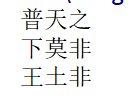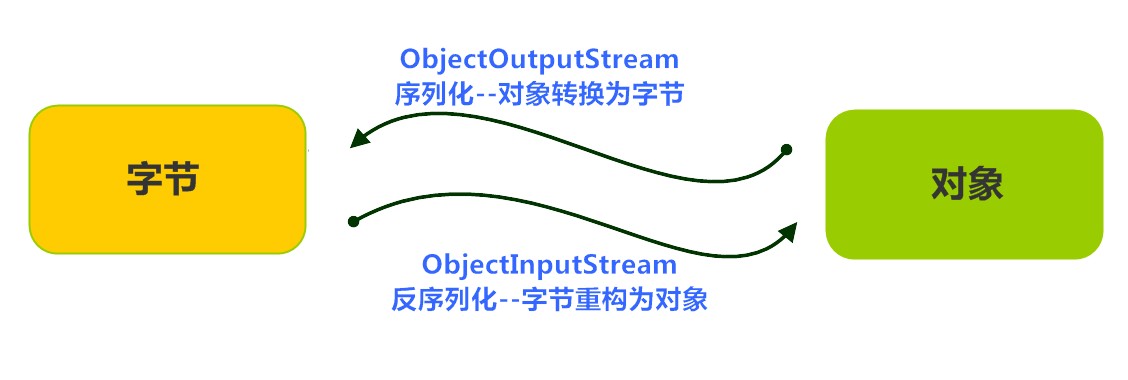1.字节流
1.1 字节输入流【inputStream】
java.io.InputStream 抽象类是表示字节输入流的所有类的超类,可以读取字节信息到内存中。 它定义了字节输入流的基本共性功能方法。
- public void close() :关闭此输入流并释放与此流相关联的任何系统资源。
- public abstract int read() : 从输入流读取数据的下一个字节。
- public int read(byte[] b) : 从输入流中读取一些字节数,并将它们存储到字节数组 b中 。
小贴士:
close方法,当完成流的操作时,必须调用此方法,释放系统资源。
1.2 FileInputStream
java.io.FileInputStream 类是文件输入流,从文件中读取字节。
构造方法:
-
- FileInputStream(File file) : 通过打开与实际文件的连接来创建一个 FileInputStream ,该文件由文件系统中的 File对象 file命名。
-
FileInputStream(String name) : 通过打开与实际文件的连接来创建一个 FileInputStream ,该文件由文件系统中的路径名 name命名。
当你创建一个流对象时,必须传入一个文件路径。该路径下,如果没有该文件,会抛出 FileNotFoundException 。
示例代码:
1 public class FileInputStreamConstructor throws IOException{ 2 public static void main(String[] args) { 3 // 使用File对象创建流对象 4 File file = new File("a.txt"); 5 FileInputStream fos = new FileInputStream(file); 6 // 使用文件名称创建流对象 7 FileInputStream fos = new FileInputStream("b.txt"); 8 } 9 }
读取字节数据:
1. 读取字节: read 方法,每次可以读取一个字节的数据,转化为int类型的数据,当读取到文件末尾,则返回 -1 ,代码使用演示:
1 public class FISRead { 2 public static void main(String[] args) throws IOException{ 3 // 使用文件名称创建流对象 4 FileInputStream fis = new FileInputStream("read.txt"); 5 // 读取数据,返回一个字节 6 int read = fis.read(); 7 System.out.println((char) read); 8 read = fis.read(); 9 System.out.println((char) read); 10 read = fis.read(); 11 System.out.println((char) read); 12 read = fis.read(); 13 System.out.println((char) read); 14 read = fis.read(); 15 System.out.println((char) read); 16 // 读取到末尾,返回-1 17 read = fis.read(); 18 System.out.println( read); 19 // 关闭资源 20 fis.close(); 21 } 22 }
结果如下:
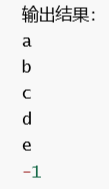
改进读取方式,使用循环读取的方式。代码使用演示:
1 public class FISRead { 2 public static void main(String[] args) throws IOException{ 3 // 使用文件名称创建流对象 4 FileInputStream fis = new FileInputStream("read.txt"); 5 // 定义变量,保存数据 6 int b ; 7 // 循环读取 8 while ((b = fis.read())!=-1) { 9 System.out.println((char)b); 10 } 11 // 关闭资源 12 fis.close(); 13 } 14 }
结果如下:
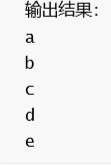
小贴士:
1.每次读取了一个字节,会自动转化为int类型的数据。2. 流操作完毕后,必须释放系统资源,调用close方法,千万记得。
2. 使用字节数组读取: read(byte[] b) ,每次读取b的长度个字节到数组中,返回读取到的有效字节个数,读取到数据末尾时,返回 -1 ,代码使用演示:
1 public class FISRead { 2 public static void main(String[] args) throws IOException{ 3 // 使用文件名称创建流对象. 4 FileInputStream fis = new FileInputStream("read.txt"); // 文件中为 abcde 5 // 定义变量,作为有效个数 6 int len ; 7 // 定义字节数组,作为装字节数据的容器 8 byte[] b = new byte[2]; 9 // 循环读取 10 while (( len= fis.read(b))!=-1) { 11 // 每次读取后,把数组变成字符串打印 12 System.out.println(new String(b)); 13 } 14 // 关闭资源 15 fis.close(); 16 } 17 }
结果如下:

错误数据 ed ,是由于后一次读取时,只读取一个字节 e ,数组中,上次读取的数据没有被完全替换,所以要通过 len ,获取有效的字节长度,代码使用演示:
1 public class FISRead { 2 public static void main(String[] args) throws IOException{ 3 // 使用文件名称创建流对象. 4 FileInputStream fis = new FileInputStream("read.txt"); // 文件中为 abcde 5 // 定义变量,作为有效个数 6 int len ; 7 // 定义字节数组,作为装字节数据的容器 8 byte[] b = new byte[2]; 9 // 循环读取 10 while (( len= fis.read(b))!=-1) { 11 // 每次读取后,把数组的有效字节部分,变成字符串打印 12 System.out.println(new String(b,0,len));// len 每次读取的有效字节个数 13 } 14 // 关闭资源 15 fis.close(); 16 } 17 }
小贴士:
使用数组读取,每次可读取多个字节,减少了系统间的IO操作次数,从而提高了读写的效率,开发中建议优先使用数组读取。
1.3 字节流:图片复制
复制图片原理图解:
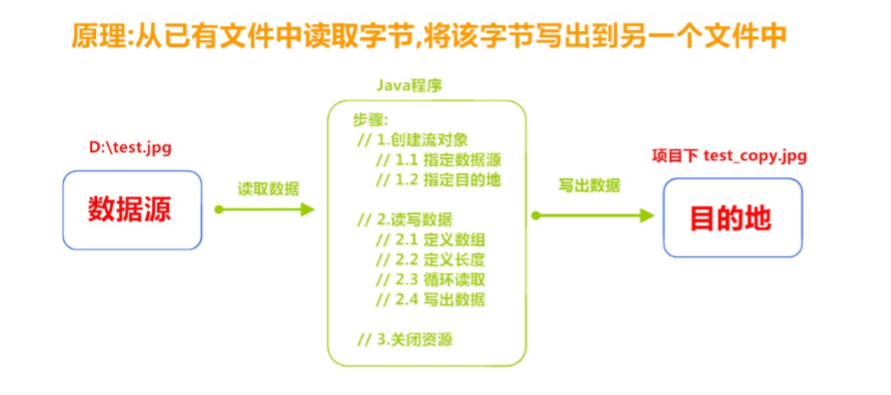
代码如下:
1 public class Copy { 2 public static void main(String[] args) throws IOException { 3 // 1.创建流对象 4 // 1.1 指定数据源 5 FileInputStream fis = new FileInputStream("D:\test.jpg"); 6 // 1.2 指定目的地 7 FileOutputStream fos = new FileOutputStream("test_copy.jpg"); 8 9 // 2.读写数据 10 // 2.1 定义数组 11 byte[] b = new byte[1024]; 12 // 2.2 定义长度 13 int len; 14 // 2.3 循环读取 15 while ((len = fis.read(b))!=-1) { 16 // 2.4 写出数据 17 fos.write(b, 0 , len); 18 } 19 20 // 3.关闭资源 21 fos.close(); 22 fis.close(); 23 } 24 }
小贴士:
流的关闭原则:先开后关,后开先关。
2.字符流
当使用字节流读取文本文件时,可能会有一个小问题。就是遇到中文字符时,可能不会显示完整的字符,那是因为一个中文字符可能占用多个字节存储。所以Java提供一些字符流类,以字符为单位读写数据,专门用于处理文本文件。
2.1 字符输入流【Reader】
java.io.Reader 抽象类是表示用于读取字符流的所有类的超类,可以读取字符信息到内存中。它定义了字符输入流的基本共性功能方法。
- public void close() :关闭此流并释放与此流相关联的任何系统资源。
- public int read() : 从输入流读取一个字符。
- public int read(char[] cbuf) : 从输入流中读取一些字符,并将它们存储到字符数组 cbuf中 。
2.2 FileReader
java.io.FileReader 类是读取字符文件的便利类。构造时使用系统默认的字符编码和默认字节缓冲区。
小贴士:
1. 字符编码:字节与字符的对应规则。Windows系统的中文编码默认是GBK编码表。idea中为默认为UTF-82. 字节缓冲区:一个字节数组,用来临时存储字节数据。
构造方法:
- FileReader(File file) : 创建一个新的 FileReader ,给定要读取的File对象。
-
FileReader(String fileName) : 创建一个新的 FileReader ,给定要读取的文件的名称。
当你创建一个流对象时,必须传入一个文件路径。类似于FileInputStream 。
构造举例,代码如下:
1 public class FileReaderConstructor throws IOException{ 2 public static void main(String[] args) { 3 // 使用File对象创建流对象 4 File file = new File("a.txt"); 5 FileReader fr = new FileReader(file); 6 // 使用文件名称创建流对象 7 FileReader fr = new FileReader("b.txt"); 8 } 9 }
读取字符数据:
读取字符: read 方法,每次可以读取一个字符的数据,转化为int类型,读取到文件末尾时,返回 -1 ,循环读取,代码使用演示:
1 public class FRRead { 2 public static void main(String[] args) throws IOException { 3 // 使用文件名称创建流对象 4 FileReader fr = new FileReader("read.txt"); 5 // 定义变量,保存数据 6 int b ; 7 // 循环读取 8 while ((b = fr.read())!=-1) { 9 System.out.println((char)b); 10 } 11 // 关闭资源 12 fr.close(); 13 } 14 }
结果:
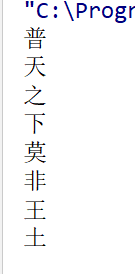
小贴士:每次读取了一个字符,会自动转化为int类型。
1 public class FRRead { 2 public static void main(String[] args) throws IOException { 3 // 使用文件名称创建流对象 4 FileReader fr = new FileReader("read.txt"); 5 // 定义变量,保存有效字符个数 6 int len ; 7 // 定义字符数组,作为装字符数据的容器 8 char[] cbuf = new char[3]; 9 // 循环读取 10 while ((len = fr.read(cbuf))!=-1) { 11 System.out.println(new String(cbuf)); 12 } 13 // 关闭资源 14 fr.close(); 15 } 16 }
获取有效的字符改进,代码使用演示:
1 public class FISRead { 2 public static void main(String[] args) throws IOException { 3 // 使用文件名称创建流对象 4 FileReader fr = new FileReader("read.txt"); 5 // 定义变量,保存有效字符个数 6 int len ; 7 // 定义字符数组,作为装字符数据的容器 8 char[] cbuf = new char[2]; 9 // 循环读取 10 while ((len = fr.read(cbuf))!=-1) { 11 System.out.println(new String(cbuf,0,len)); 12 } 13 // 关闭资源 14 fr.close(); 15 } 16 }
结果:
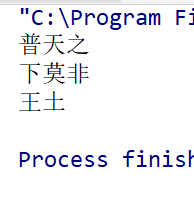
2.3 字符输出流【Writer】
-
-
public abstract void flush():刷新此输出流并强制写出任何缓冲的输出字符。 -
public void write(int c):写出一个字符。 -
public void write(char[] cbuf):从指定的字符数组中写出字符到此输出流。 -
public abstract void write(char[] b, int off, int len):从指定的字符数组写出从偏移量 off开始, len长度的字符,输出到此输出流。 -
public void write(String str):写出一个字符串。
2.4 FileWriter
-
-
FileWriter(String fileName): 创建一个新的 FileWriter,给定要写出的文件的名称。
当你创建一个流对象时,必须传入一个文件路径,类似于FileOutputStream。
代码如下:
1 public class FileWriterConstructor { 2 public static void main(String[] args) throws IOException { 3 // 使用File对象创建流对象 4 File file = new File("a.txt"); 5 FileWriter fw = new FileWriter(file); 6 7 // 使用文件名称创建流对象 8 FileWriter fw = new FileWriter("b.txt"); 9 } 10 }
基本写出数据:
写出字符:write(int b) 方法,每次可以写出一个字符数据,代码使用演示:
代码如下:
1 public class FWWrite { 2 public static void main(String[] args) throws IOException { 3 // 使用文件名称创建流对象 4 FileWriter fw = new FileWriter("fw.txt"); 5 // 写出数据 6 fw.write(97); // 写出第1个字符 7 fw.write('b'); // 写出第2个字符 8 fw.write('C'); // 写出第3个字符 9 fw.write(30000); // 写出第4个字符,中文编码表中30000对应一个汉字。 10 11 /* 12 【注意】关闭资源时,与FileOutputStream不同。 13 如果不关闭,数据只是保存到缓冲区,并未保存到文件。 14 */ 15 // fw.close(); 16 } 17 }
结果:
小贴士:
1. 未调用close方法,数据只是保存到了缓冲区,并未写出到文件中。
关闭和刷新
因为内置缓冲区的原因,如果不关闭输出流,无法写出字符到文件中。但是关闭的流对象,是无法继续写出数据的。如果我们既想写出数据,又想继续使用流,就需要flush 方法了。
-
-
close:关闭流,释放系统资源。关闭前会刷新缓冲区。
代码使用演示:
1 public class FWWrite { 2 public static void main(String[] args) throws IOException { 3 // 使用文件名称创建流对象 4 FileWriter fw = new FileWriter("fw.txt"); 5 // 写出数据,通过flush 6 fw.write('刷'); // 写出第1个字符 7 fw.flush(); 8 fw.write('新'); // 继续写出第2个字符,写出成功 9 fw.flush(); 10 11 // 写出数据,通过close 12 fw.write('关'); // 写出第1个字符 13 fw.close(); 14 fw.write('闭'); // 继续写出第2个字符,【报错】java.io.IOException: Stream closed 15 fw.close(); 16 } 17 }
小贴士:
即便是flush方法写出了数据,操作的最后还是要调用close方法,释放系统资源。
写出其他数据
写出字符数组 :write(char[] cbuf) 和 write(char[] cbuf, int off, int len) ,每次可以写出字符数组中的数据,用法类似FileOutputStream,代码使用演示:
1 public class FWWrite { 2 public static void main(String[] args) throws IOException { 3 // 使用文件名称创建流对象 4 FileWriter fw = new FileWriter("fw.txt"); 5 // 字符串转换为字节数组 6 char[] chars = "普天之下莫非王土".toCharArray(); 7 8 // 写出字符数组 9 fw.write(chars); // 普天之下莫非王土 10 11 // 写出从索引2开始,2个字符。索引2是'之',两个字符,也就是'之下'。 12 fw.write(b,2,2); // 之下 13 14 // 关闭资源 15 fos.close(); 16 } 17 }
写出字符串:write(String str) 和 write(String str, int off, int len) ,每次可以写出字符串中的数据,更为方便,代码使用演示:
1 public class FWWrite { 2 public static void main(String[] args) throws IOException { 3 // 使用文件名称创建流对象 4 FileWriter fw = new FileWriter("fw.txt"); 5 // 字符串 6 String msg = "普天之下莫非王土"; 7 8 // 写出字符数组 9 fw.write(msg); //普天之下莫非王土 10 11 // 写出从索引2开始,2个字符。索引2是'之',两个字符,也就是'之下'。 12 fw.write(msg,2,2); //之下 13 14 // 关闭资源 15 fos.close(); 16 } 17 }
续写和换行:操作类似于FileOutputStream。
1 public class FWWrite { 2 public static void main(String[] args) throws IOException { 3 // 使用文件名称创建流对象,可以续写数据 4 FileWriter fw = new FileWriter("fw.txt",true); 5 // 写出字符串 6 fw.write("普天"); 7 // 写出换行 8 fw.write(" "); 9 // 写出字符串 10 fw.write("之下"); 11 // 关闭资源 12 fw.close(); 13 } 14 }
结果:
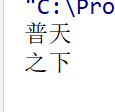
小贴士:
字符流,只能操作文本文件,不能操作图片,视频等非文本文件。
当我们单纯读或者写文本文件时 使用字符流 其他情况使用字节流
3.IO异常处理
3.1 JK7前的处理
JDK7前处理
之前的示范代码,我们一直把异常抛出,而实际开发中并不能这样处理,建议使用try...catch...finally 代码块,处理异常部分。
代码使用演示:
1 public class HandleException1 { 2 public static void main(String[] args) { 3 // 声明变量 4 FileWriter fw = null; 5 try { 6 //创建流对象 7 fw = new FileWriter("fw.txt"); 8 // 写出数据 9 fw.write("普天之下莫非王土"); //普天之下莫非王土 10 } catch (IOException e) { 11 e.printStackTrace(); 12 } finally { 13 try { 14 if (fw != null) { 15 fw.close(); 16 } 17 } catch (IOException e) { 18 e.printStackTrace(); 19 } 20 } 21 } 22 }
JDK7的处理
还可以使用JDK7优化后的try-with-resource 语句,该语句确保了每个资源在语句结束时关闭。所谓的资源(resource)是指在程序完成后,必须关闭的对象。
格式:
1 try (创建流对象语句,如果多个,使用';'隔开) { 2 // 读写数据 3 } catch (IOException e) { 4 e.printStackTrace(); 5 }
代码使用演示:
1 public class HandleException2 { 2 public static void main(String[] args) { 3 // 创建流对象 4 try ( FileWriter fw = new FileWriter("fw.txt"); ) { 5 // 写出数据 6 fw.write("普天之下莫非王土"); //普天之下莫非王土 7 } catch (IOException e) { 8 e.printStackTrace(); 9 } 10 } 11 }
4.缓冲流
4.1概述
缓冲流,也叫高效流,是对4个基本的FileXxx 流的增强,所以也是4个流,按照数据类型分类:
-
-
字节缓冲流:
BufferedInputStream,BufferedOutputStream -
字符缓冲流:
BufferedReader,BufferedWriter
-
缓冲流的基本原理,是在创建流对象时,会创建一个内置的默认大小的缓冲区数组,通过缓冲区读写,减少系统IO次数,从而提高读写的效率。
构造方法
-
public BufferedInputStream(InputStream in):创建一个 新的缓冲输入流。 -
public BufferedOutputStream(OutputStream out): 创建一个新的缓冲输出流。
构造举例,代码如下:
1 // 创建字节缓冲输入流 2 BufferedInputStream bis = new BufferedInputStream(new FileInputStream("bis.txt")); 3 // 创建字节缓冲输出流 4 BufferedOutputStream bos = new BufferedOutputStream(new FileOutputStream("bos.txt"));
查询API,缓冲流读写方法与基本的流是一致的,我们通过复制大文件(375MB),测试它的效率。
1.基本流,代码如下:
1 public class BufferedDemo { 2 public static void main(String[] args) throws FileNotFoundException { 3 // 记录开始时间 4 long start = System.currentTimeMillis(); 5 // 创建流对象 6 try ( 7 FileInputStream fis = new FileInputStream("jdk8.exe"); 8 FileOutputStream fos = new FileOutputStream("copy.exe") 9 ){ 10 // 读写数据 11 int b; 12 while ((b = fis.read()) != -1) { 13 fos.write(b); 14 } 15 } catch (IOException e) { 16 e.printStackTrace(); 17 } 18 // 记录结束时间 19 long end = System.currentTimeMillis(); 20 System.out.println("普通流复制时间:"+(end - start)+" 毫秒"); 21 } 22 } 23 24 十几分钟过去了...
2.缓冲流,代码如下:
1 public class BufferedDemo { 2 public static void main(String[] args) throws FileNotFoundException { 3 // 记录开始时间 4 long start = System.currentTimeMillis(); 5 // 创建流对象 6 try ( 7 BufferedInputStream bis = new BufferedInputStream(new FileInputStream("jdk8.exe")); 8 BufferedOutputStream bos = new BufferedOutputStream(new FileOutputStream("copy.exe")); 9 ){ 10 // 读写数据 11 int b; 12 while ((b = bis.read()) != -1) { 13 bos.write(b); 14 } 15 } catch (IOException e) { 16 e.printStackTrace(); 17 } 18 // 记录结束时间 19 long end = System.currentTimeMillis(); 20 System.out.println("缓冲流复制时间:"+(end - start)+" 毫秒"); 21 } 22 } 23 24 缓冲流复制时间:8016 毫秒
使用数组的方式,代码如下:
1 public class BufferedDemo { 2 public static void main(String[] args) throws FileNotFoundException { 3 // 记录开始时间 4 long start = System.currentTimeMillis(); 5 // 创建流对象 6 try ( 7 BufferedInputStream bis = new BufferedInputStream(new FileInputStream("jdk8.exe")); 8 BufferedOutputStream bos = new BufferedOutputStream(new FileOutputStream("copy.exe")); 9 ){ 10 // 读写数据 11 int len; 12 byte[] bytes = new byte[8*1024]; 13 while ((len = bis.read(bytes)) != -1) { 14 bos.write(bytes, 0 , len); 15 } 16 } catch (IOException e) { 17 e.printStackTrace(); 18 } 19 // 记录结束时间 20 long end = System.currentTimeMillis(); 21 System.out.println("缓冲流使用数组复制时间:"+(end - start)+" 毫秒"); 22 } 23 } 24 缓冲流使用数组复制时间:666 毫秒
4.3 字符缓冲流
构造方法
-
public BufferedReader(Reader in):创建一个 新的缓冲输入流。 -
public BufferedWriter(Writer out)
构造举例,代码如下:
1 // 创建字符缓冲输入流 2 BufferedReader br = new BufferedReader(new FileReader("br.txt")); 3 // 创建字符缓冲输出流 4 BufferedWriter bw = new BufferedWriter(new FileWriter("bw.txt"));
字符缓冲流的基本方法与普通字符流调用方式一致,不再阐述,我们来看它们具备的特有方法。
-
BufferedReader:
public String readLine(): 读一行文字。 -
BufferedWriter:
public void newLine(): 写一行行分隔符,由系统属性定义符号。
readLine方法演示,代码如下:
1 public class BufferedReaderDemo { 2 public static void main(String[] args) throws IOException { 3 // 创建流对象 4 BufferedReader br = new BufferedReader(new FileReader("in.txt")); 5 // 定义字符串,保存读取的一行文字 6 String line = null; 7 // 循环读取,读取到最后返回null 8 while ((line = br.readLine())!=null) { 9 System.out.print(line); 10 System.out.println("------"); 11 } 12 // 释放资源 13 br.close(); 14 } 15 }
1 public class BufferedWriterDemo throws IOException { 2 public static void main(String[] args) throws IOException { 3 // 创建流对象 4 BufferedWriter bw = new BufferedWriter(new FileWriter("out.txt")); 5 // 写出数据 6 bw.write("普天之下"); 7 // 写出换行 8 bw.newLine(); 9 bw.write("莫非"); 10 bw.newLine(); 11 bw.write("王土"); 12 bw.newLine(); 13 // 释放资源 14 bw.close(); 15 } 16 }
结果:
5.转换流
5.1字符编码和字符集
计算机中储存的信息都是用二进制数表示的,而我们在屏幕上看到的数字、英文、标点符号、汉字等字符是二进制数转换之后的结果。按照某种规则,将字符存储到计算机中,称为编码 。反之,将存储在计算机中的二进制数按照某种规则解析显示出来,称为解码 。比如说,按照A规则存储,同样按照A规则解析,那么就能显示正确的文本f符号。反之,按照A规则存储,再按照B规则解析,就会导致乱码现象。
: 就是一套自然语言的字符与二进制数之间的对应规则。
字符集
-
字符集
Charset:也叫编码表。是一个系统支持的所有字符的集合,包括各国家文字、标点符号、图形符号、数字等。
计算机要准确的存储和识别各种字符集符号,需要进行字符编码,一套字符集必然至少有一套字符编码。常见字符集有ASCII字符集、GBK字符集、Unicode字符集等。

-
-
-
ASCII(American Standard Code for Information Interchange,美国信息交换标准代码)是基于拉丁字母的一套电脑编码系统,用于显示现代英语,主要包括控制字符(回车键、退格、换行键等)和可显示字符(英文大小写字符、阿拉伯数字和西文符号)。
-
基本的ASCII字符集,使用7位(bits)表示一个字符,共128字符。ASCII的扩展字符集使用8位(bits)表示一个字符,共256字符,方便支持欧洲常用字符。
-
-
ISO-8859-1字符集:
-
拉丁码表,别名Latin-1,用于显示欧洲使用的语言,包括荷兰、丹麦、德语、意大利语、西班牙语等。
-
ISO-5559-1使用单字节编码,兼容ASCII编码。
-
-
GBxxx字符集:
-
GB就是国标的意思,是为了显示中文而设计的一套字符集。
-
GB2312:简体中文码表。一个小于127的字符的意义与原来相同。但两个大于127的字符连在一起时,就表示一个汉字,这样大约可以组合了包含7000多个简体汉字,此外数学符号、罗马希腊的字母、日文的假名们都编进去了,连在ASCII里本来就有的数字、标点、字母都统统重新编了两个字节长的编码,这就是常说的"全角"字符,而原来在127号以下的那些就叫"半角"字符了。
-
GBK:最常用的中文码表。是在GB2312标准基础上的扩展规范,使用了双字节编码方案,共收录了21003个汉字,完全兼容GB2312标准,同时支持繁体汉字以及日韩汉字等。
-
GB18030:最新的中文码表。收录汉字70244个,采用多字节编码,每个字可以由1个、2个或4个字节组成。支持中国国内少数民族的文字,同时支持繁体汉字以及日韩汉字等。
-
-
Unicode字符集 :
-
Unicode编码系统为表达任意语言的任意字符而设计,是业界的一种标准,也称为统一码、标准万国码。
-
它最多使用4个字节的数字来表达每个字母、符号,或者文字。有三种编码方案,UTF-8、UTF-16和UTF-32。最为常用的UTF-8编码。
-
UTF-8编码,可以用来表示Unicode标准中任何字符,它是电子邮件、网页及其他存储或传送文字的应用中,优先采用的编码。互联网工程工作小组(IETF)要求所有互联网协议都必须支持UTF-8编码。所以,我们开发Web应用,也要使用UTF-8编码。它使用一至四个字节为每个字符编码,编码规则:
-
128个US-ASCII字符,只需一个字节编码。
-
拉丁文等字符,需要二个字节编码。
-
大部分常用字(含中文),使用三个字节编码。
-
其他极少使用的Unicode辅助字符,使用四字节编码。
-
-
5.2 编码引出的问题
1 public class ReaderDemo { 2 public static void main(String[] args) throws IOException { 3 FileReader fileReader = new FileReader("E:\File_GBK.txt"); 4 int read; 5 while ((read = fileReader.read()) != -1) { 6 System.out.print((char)read); 7 } 8 fileReader.close(); 9 } 10 }
构造方法
-
InputStreamReader(InputStream in): 创建一个使用默认字符集的字符流。 -
InputStreamReader(InputStream in, String charsetName): 创建一个指定字符集的字符流。
构造举例,代码如下:
1 InputStreamReader isr = new InputStreamReader(new FileInputStream("in.txt")); 2 InputStreamReader isr2 = new InputStreamReader(new FileInputStream("in.txt") , "GBK");
1 public class ReaderDemo2 { 2 public static void main(String[] args) throws IOException { 3 // 定义文件路径,文件为gbk编码 4 String FileName = "E:\file_gbk.txt"; 5 // 创建流对象,默认UTF8编码 6 InputStreamReader isr = new InputStreamReader(new FileInputStream(FileName)); 7 // 创建流对象,指定GBK编码 8 InputStreamReader isr2 = new InputStreamReader(new FileInputStream(FileName) , "GBK"); 9 // 定义变量,保存字符 10 int read; 11 // 使用默认编码字符流读取,乱码 12 while ((read = isr.read()) != -1) { 13 System.out.print((char)read); // ��Һ� 14 } 15 isr.close(); 16 17 // 使用指定编码字符流读取,正常解析 18 while ((read = isr2.read()) != -1) { 19 System.out.print((char)read);// 大家好 20 } 21 isr2.close(); 22 } 23 }
构造方法
-
OutputStreamWriter(OutputStream in): 创建一个使用默认字符集的字符流。 -
OutputStreamWriter(OutputStream in, String charsetName): 创建一个指定字符集的字符流。
构造举例,代码如下:
OutputStreamWriter isr = new OutputStreamWriter(new FileOutputStream("out.txt")); OutputStreamWriter isr2 = new OutputStreamWriter(new FileOutputStream("out.txt") , "GBK");
1 public class OutputDemo { 2 public static void main(String[] args) throws IOException { 3 // 定义文件路径 4 String FileName = "E:\out.txt"; 5 // 创建流对象,默认UTF8编码 6 OutputStreamWriter osw = new OutputStreamWriter(new FileOutputStream(FileName)); 7 // 写出数据 8 osw.write("你好"); // 保存为6个字节 9 osw.close(); 10 11 // 定义文件路径 12 String FileName2 = "E:\out2.txt"; 13 // 创建流对象,指定GBK编码 14 OutputStreamWriter osw2 = new OutputStreamWriter(new FileOutputStream(FileName2),"GBK"); 15 // 写出数据 16 osw2.write("你好");// 保存为4个字节 17 osw2.close(); 18 } 19 }
转换流是字节与字符间的桥梁!
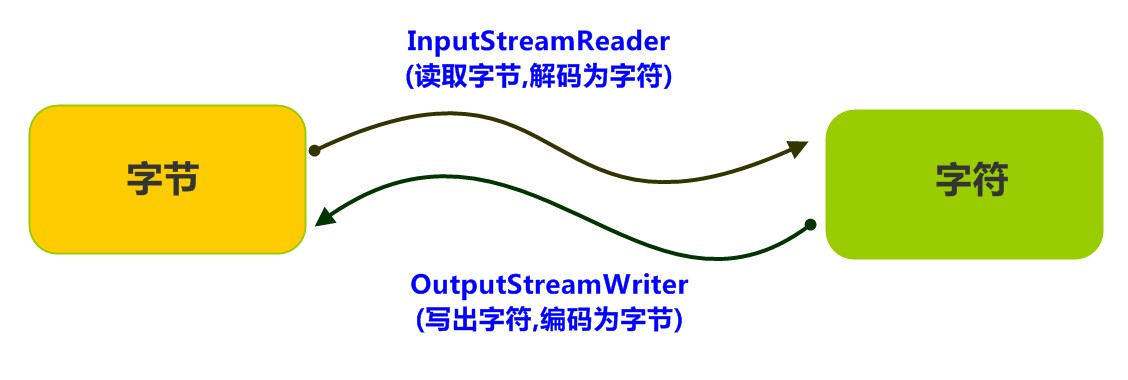
-
public ObjectOutputStream(OutputStream out): 创建一个指定OutputStream的ObjectOutputStream。
构造举例,代码如下:
1 FileOutputStream fileOut = new FileOutputStream("employee.txt"); 2 ObjectOutputStream out = new ObjectOutputStream(fileOut);
-
一个对象要想序列化,必须满足两个条件:
-
该类必须实现
java.io.Serializable接口,Serializable是一个标记接口,不实现此接口的类将不会使任何状态序列化或反序列化,会抛出NotSerializableException。 -
该类的所有属性必须是可序列化的。如果有一个属性不需要可序列化的,则该属性必须注明是瞬态的,使用
transient关键字修饰。
1 public class Employee implements java.io.Serializable { 2 public String name; 3 public String address; 4 public transient int age; // transient瞬态修饰成员,不会被序列化 5 public void addressCheck() { 6 System.out.println("Address check : " + name + " -- " + address); 7 } 8 }
-
public final void writeObject (Object obj): 将指定的对象写出。
1 public class SerializeDemo{ 2 public static void main(String [] args) { 3 Employee e = new Employee(); 4 e.name = "zhangsan"; 5 e.address = "beiqinglu"; 6 e.age = 20; 7 try { 8 // 创建序列化流对象 9 ObjectOutputStream out = new ObjectOutputStream(new FileOutputStream("employee.txt")); 10 // 写出对象 11 out.writeObject(e); 12 // 释放资源 13 out.close(); 14 fileOut.close(); 15 System.out.println("Serialized data is saved"); // 姓名,地址被序列化,年龄没有被序列化。 16 } catch(IOException i) { 17 i.printStackTrace(); 18 } 19 } 20 } 21 输出结果: 22 Serialized data is saved
构造方法
-
public ObjectInputStream(InputStream in): 创建一个指定InputStream的ObjectInputStream。
反序列化操作1
如果能找到一个对象的class文件,我们可以进行反序列化操作,调用ObjectInputStream读取对象的方法:
-
public final Object readObject (): 读取一个对象。
1 public class DeserializeDemo { 2 public static void main(String [] args) { 3 Employee e = null; 4 try { 5 // 创建反序列化流 6 FileInputStream fileIn = new FileInputStream("employee.txt"); 7 ObjectInputStream in = new ObjectInputStream(fileIn); 8 // 读取一个对象 9 e = (Employee) in.readObject(); 10 // 释放资源 11 in.close(); 12 fileIn.close(); 13 }catch(IOException i) { 14 // 捕获其他异常 15 i.printStackTrace(); 16 return; 17 }catch(ClassNotFoundException c) { 18 // 捕获类找不到异常 19 System.out.println("Employee class not found"); 20 c.printStackTrace(); 21 return; 22 } 23 // 无异常,直接打印输出 24 System.out.println("Name: " + e.name); // zhangsan 25 System.out.println("Address: " + e.address); // beiqinglu 26 System.out.println("age: " + e.age); // 0 27 } 28 }
另外,当JVM反序列化对象时,能找到class文件,但是class文件在序列化对象之后发生了修改,那么反序列化操作也会失败,抛出一个
-
该类的序列版本号与从流中读取的类描述符的版本号不匹配
-
该类包含未知数据类型
-
该类没有可访问的无参数构造方法
Serializable 接口给需要序列化的类,提供了一个序列版本号。serialVersionUID 该版本号的目的在于验证序列化的对象和对应类是否版本匹配。
1 public class Employee implements java.io.Serializable { 2 // 加入序列版本号 3 private static final long serialVersionUID = 1L; 4 public String name; 5 public String address; 6 // 添加新的属性 ,重新编译, 可以反序列化,该属性赋为默认值. 7 public int eid; 8 9 public void addressCheck() { 10 System.out.println("Address check : " + name + " -- " + address); 11 } 12 }
7.打印流
7.1概述
-
public PrintStream(String fileName): 使用指定的文件名创建一个新的打印流。
构造举例,代码如下:
1 PrintStream ps = new PrintStream("ps.txt");
1 public class PrintDemo { 2 public static void main(String[] args) throws IOException { 3 // 调用系统的打印流,控制台直接输出97 4 System.out.println(97); 5 6 // 创建打印流,指定文件的名称 7 PrintStream ps = new PrintStream("ps.txt"); 8 9 // 设置系统的打印流流向,输出到ps.txt 10 System.setOut(ps); 11 // 调用系统的打印流,ps.txt中输出97 12 System.out.println(97); 13 } 14 }
